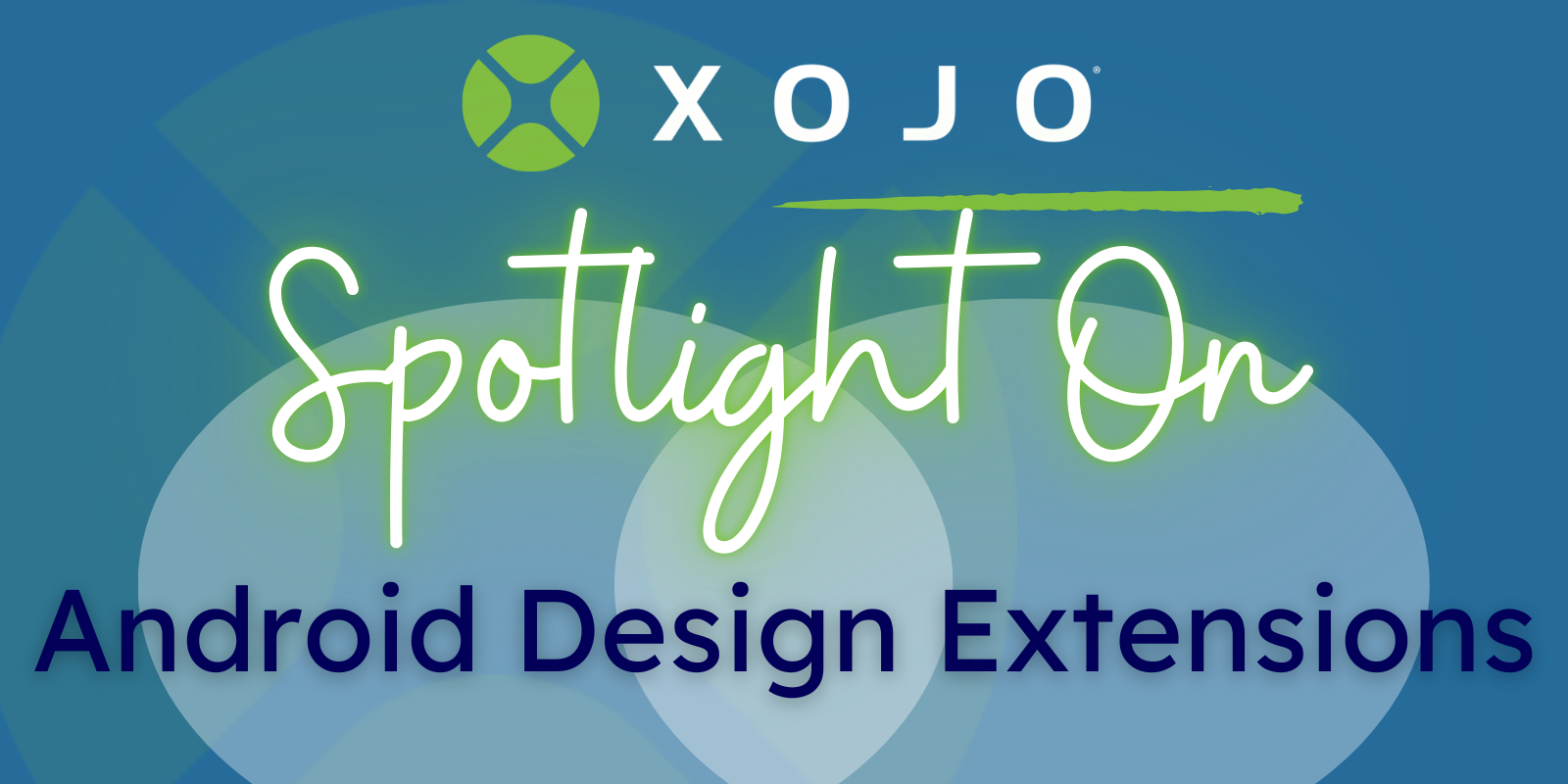Spotlight On posts focus on Xojo community members. We’ll use this space to tell the stories of people using Xojo, share amazing Xojo-made apps and spread awareness of community resources. If you have an app, a project or a person you want to see featured in Spotlight On, tell us about it!
Martin started using Xojo around the time he got his first MacBook. He was drawn to Xojo’s simplicity and flexibility. If you ask him, Martin will say designing clean, intuitive user interfaces is one of his favorite parts of development. Though he’s also a Xojo MVP, he’s probably best know as the developer behind Android Design Extensions.
Mac, Windows or Linux?
Mac.
How would you explain your most recent project to a new developer?
The Android Design Extensions are a collection of enhancements for Android projects in Xojo, aimed at polishing the UI of your apps. This is the primary focus of the project. It addresses aspects that Xojo does not natively provide.
We live in a visual world—design in advertising and product presentation shapes users’ impressions of a company or product. The same applies to software. Is the UI user-friendly and visually appealing? Is it enjoyable to use the app? These questions have always been the guiding principles behind the creation of the Android Design Extensions.
What do you think Martin from 2020 would think about what you do now?
Five years ago, I could never have imagined that I would be a Xojo MVP and be able to make my own project available to other users. Android Design Extensions is the result of many hundreds of hours of intensive collaboration with the Xojo team, which has resulted in Xojo Android becoming more stable and, above all, enormously powerful. For example, in terms of declares, it’s really easy and there’s hardly anything now that you can’t implement in Android projects, as long as you know how to read the Android API and handle declares.
That’s almost the best memory of the last five years, that Xojo has listened to feedback from Android users and responded very quickly. It’s amazing how fast Android support in Xojo has progressed over the past two years.
What is on your “Learn Next” list?
Definitely delve deeper into Android APIs to explore the possibilities of Xojo Android even more.
How did you find Xojo? And when did you start using Xojo?
I first came into contact with Xojo around 2008. At that time it was still called Real Studio and I had found it on a DVD that was enclosed with a computer magazine. I was an active Delphi developer at the time and immediately fell in love with the simplicity of the language.
What do you build with Xojo now?
Fortunately, I have greatly expanded my programming skills thanks to Xojo. My focus is on UI development, controls, especially the TextInputCanvas, Android and desktop programs.
What is something you worked on that you want to talk about?
I became very friendly with TextInputCanvas (a free plugin) and together with Björn Eiríksson from Einhugur, we created an updated API 2.0 version of the plugin, which we still maintain today.
I used to work as a developer for Bob Keeney and was responsible for the Formatted Text Control, which is based on TextInputCanvas. There are several programs on the market that make intensive use of this control and I am still involved in some of these projects today, making the WYSIWYG experience even more pleasant for customers when entering text.
Do you use Xojo for any hobbies?
I also use Xojo to write software for genealogical purposes. From a young age, I developed a curiosity and desire to learn more about the history of my family and its members. That is how I came to genealogy. It is a kind of detective work that can lead to surprising family connections, secrets, strokes of fate, and even unknown relatives. Since I enjoy reading, I prefer to have such information in book form and written out, rather than in tables. A book with text feels more tangible to me—something the reader can engage with more consciously.
None of the genealogy software available on the market has ever met my expectations. That is why I wrote my own software in Xojo, which can process the standard format for genealogical data known as Gedcom. You can think of it as a database in plain text format. From this data, I can then generate—depending on what is desired—full biographies, ancestor and descendant trees, and more. The finished result is a Word document, complete with indices at the end for all people, places, professions, and so on—just like in a real book.
Thank you to Martin T. for answering questions and sharing his Xojo experience with the community. Martin accepts donations for his work on Android Design Extensions. Download Android Design Extensions. Read more about Android Design Extensions on the Xojo Blog.

